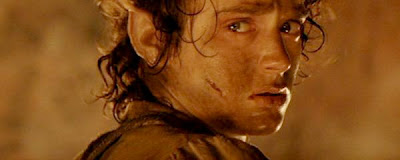Tolkien: “So at the end, Frodo sells the ring and uses the money as a downpayment on a luxury timeshare.”
C.S. Lewis: “Maybe you should give the ending more thought.”
These are my personal tips for NaNoWriMo. You know the drill. Take only what works.
Brainstorming is still in progress. It’s going to be open season on ideas until the rich outline / rough draft is hammered out. Early on, it’s important to ask, “Where is this going? What concrete action will the hero take to show he’s won?”
I was talking to a writer friend recently about his new novel and asked him for the story synopsis. He gave a wonderful premise and what sounded like the first chapter or two. But there was no story arc, no goal and no ending in sight.
If you plow into a 50,000 word or 100,000 word novel not knowing your ending, I think you’re just asking for a life of pain.
As I’ve looked back over the many books I’ve started to write and never finished, I realized something. If I didn’t know the ending to a book, I didn’t finish it. If I knew the ending, I might leave it for a while, but I always came back to it.
Wow. How mind-numbingly obvious is that?!
There are two stages to knowing your ending: knowing what concrete goal your hero seeks, and knowing whether or not he finds it. That’s it. Easy-schmeasy! How could I have missed that for so many manuscripts?
A concrete action is something like throwing the Ring into the heart of a volcano, or marrying Rosie and having a dozen baby hobbits or departing Middle Earth forever on Elven Ships. You know there’s no going back to the way things were before. If you’re ambitious, you can include all of those, like Tolkien—but you must have at leastone.
Now, if you are writing a literary novel, you might think I am full of pulp fiction crap, what with my concreteness and all. Nonsense. Even literary novels culminate, and they usually have some concrete manifestation of that culmination, even if it’s terribly subtle. My friend Michelle Argyle Davidson’s book Cinders (now available as part of the
collection
Bonded) ends with the heroine releasing white flowers into the air. You won’t know what significance that has unless you read the story, and it’s subtle even then, but it’s a physical manifestation of the heroine’s transformation.
Choosing an ending goes hand in hand with the most important thing you need to do if you want to know the plot of your book: choose the hero’s goal. If you know what the hero wants, and needs (they usually conflict), and how these are reconciled, then you’ll know the ending.
If you prefer these Tips as an ebook you can buy it here for $0.99:



